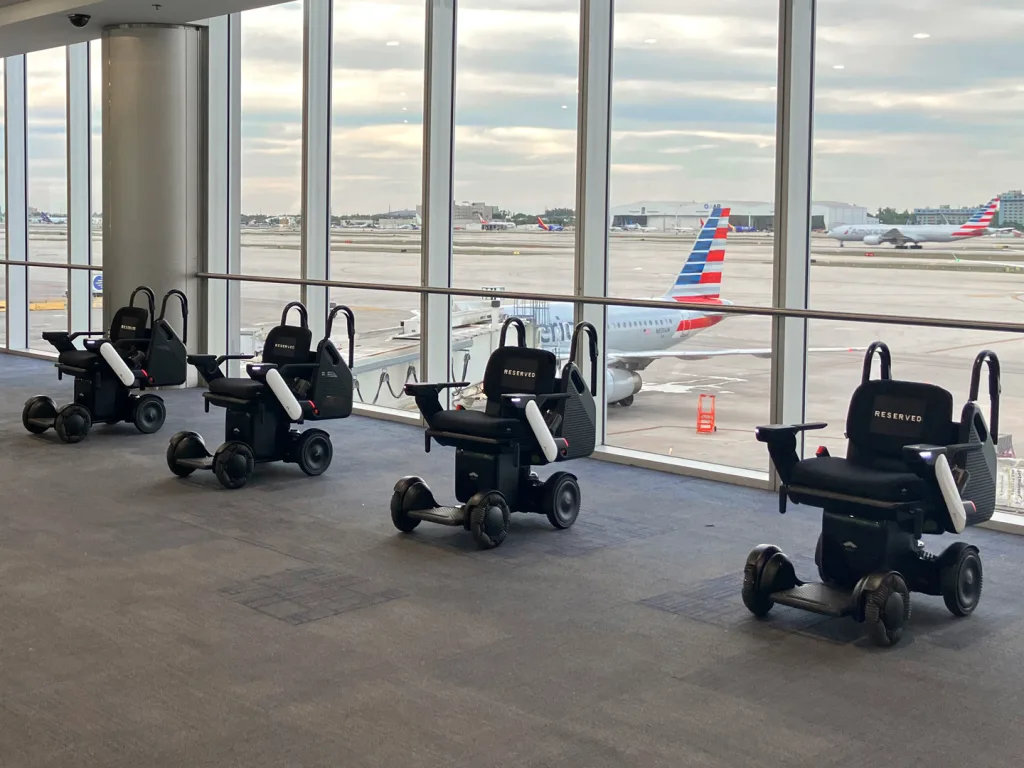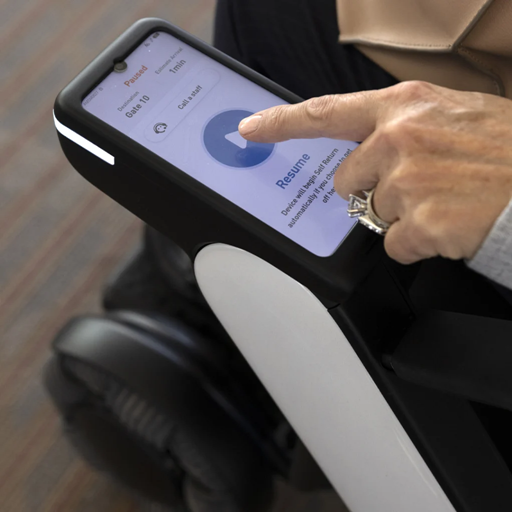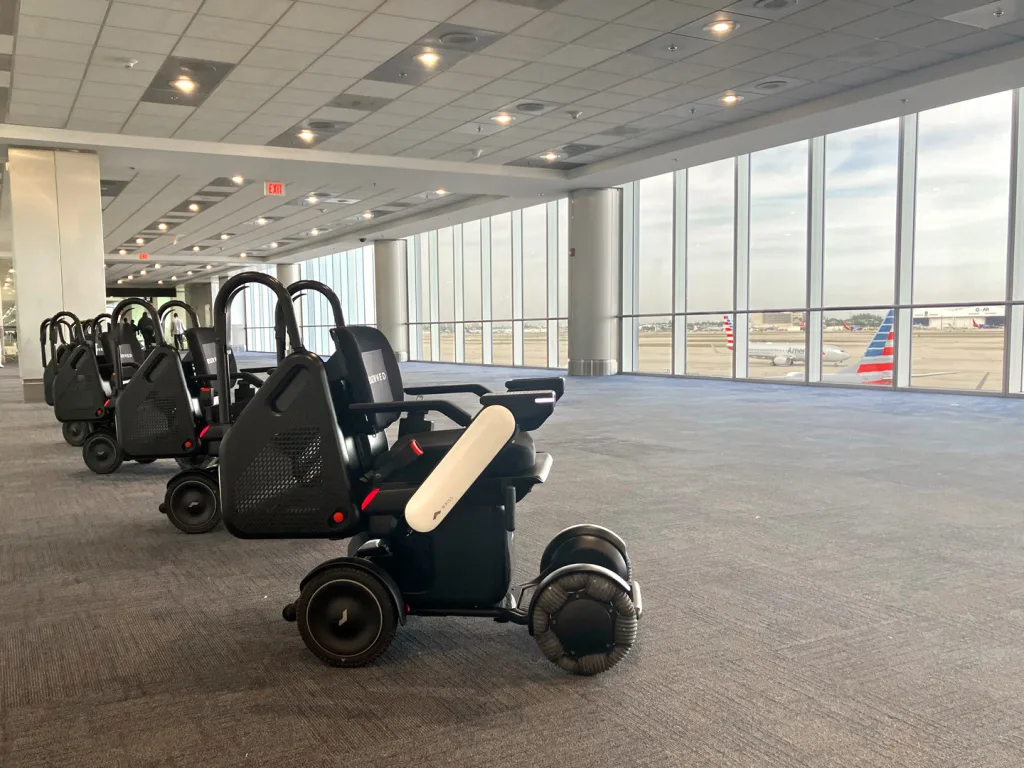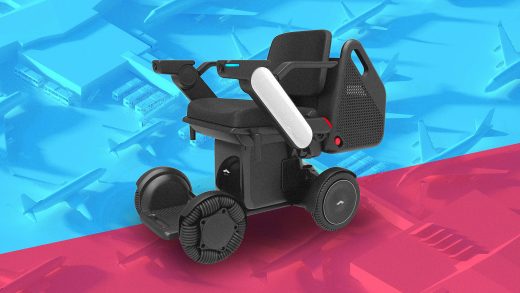American Airlines rolls out wheelchairs that can automatically take passengers to their gates
American Airlines rolls out wheelchairs that can automatically take passengers to their gates
Whill’s autonomous chairs will zip passengers to their gates, avoiding obstacles, then return to their starting place.
BY Talib Visram
Airline passengers have long been able to request support at the airport—essentially a staff member who transports them in a wheelchair around the terminal. But staffing shortages are common, especially at peak flying hours.
Japanese mobility device manufacturer Whill is partnering with American Airlines to offer the first “autonomous devices” in U.S. airports. Initially launching in Los Angeles and Miami, the devices will ferry passengers with low mobility to their gates.

“If you think about the wheelchair experience at an airport, it’s really a 40-year old idea,” says Shane Bogni, Whill’s VP of business development for North America. “Nothing’s changed. There’s been no innovation.”
Whill’s autonomous devices are essentially chairs that run on electricity. Whill is partnering with Envoy Air, which is owned by American Airlines and takes on man of its additional services, including luggage loading, cabin cleaning, and wheelchair support.
Whill mapped Terminal D in Miami and Terminal 4 in L.A. to create blueprints where the devices can navigate. They created “invisible rail lines” from a designated point to each gate, which the devices know to follow.

After a passenger goes through security with a staff member, they’re taken to a waiting area. Close to departure time, they’re seated on the device, which has a slot for luggage in the back. Using a touchscreen, they push a button for the desired gate and it takes them directly there. Once they arrive, the device returns itself to the original location.
The chairs are fitted with cameras and sensors powered by LiDAR, a remote sensing method that measures distances from objects using pulses of laser lights. Those stop them from colliding with people or going onto a wet floor, for instance. If the chair approaches a person in its path, it could “ding” like an alarm, and ask them to step aside; or it may make a small detour from its route.
The system could benefit elderly passengers and people with disabilities, who are often left for long periods as they wait for manual support. (For now, the devices will only travel to the gate; staff would still have to manually take individuals from the gate to the jetway.)

It can also help passengers who aren’t necessarily wheelchair-bound but still need assistance. “Navigation through airports is complex, particularly big hubs,” Bogni says. “People just get a little overwhelmed.” He says 80% of people who request support can actually walk some distance—but the Miami terminal is one mile long, which is too far for some people.
And Bogni says demand for support rises every year, which is getting tougher to staff. “We can help stabilize that a little bit,” he says. The devices can also help replace the ubiquitous golf-cart-like vehicles that Bogni says add to terminal congestion.
They’re initially launching with 10 devices at each airport, but plan to add more in Miami—and expand to two more hubs this summer, one in the U.S. and one in Europe.
ABOUT THE AUTHOR
.
Fast Company
(22)



